In the vast tapestry of Earth’s biodiversity, insects represent the most numerous and diverse class of animals, with over a million described species. While most are harmless or even beneficial to humans, a select few pose significant threats to human health and wellbeing. These dangerous insects serve as vectors for devastating diseases that affect hundreds of millions of people annually, causing suffering, economic hardship, and death across the globe. From the malaria-carrying Anopheles mosquito to the plague-transmitting flea, these tiny creatures have shaped human history, influenced population patterns, and continue to challenge public health systems worldwide. This article explores the most dangerous insects on our planet, examining not only the diseases they spread but also their biology, geographical distribution, and the ongoing efforts to control their impact on human populations.
The Anopheles Mosquito: Malaria’s Deadly Messenger
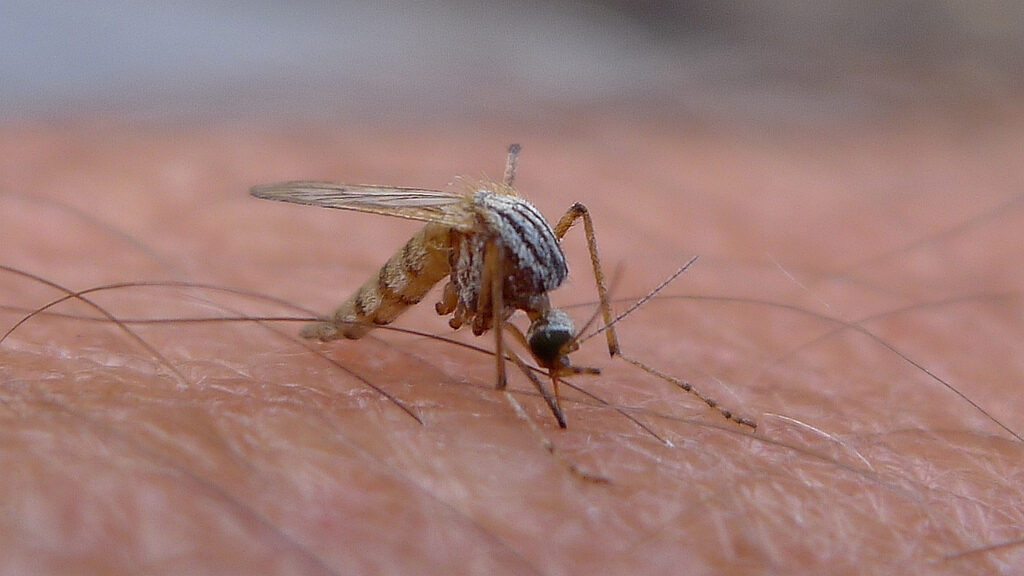
The Anopheles mosquito stands as perhaps the most lethal insect on Earth, responsible for transmitting malaria—a disease that claimed approximately 619,000 lives in 2021 alone according to the World Health Organization. Female Anopheles mosquitoes become infected when they feed on a person with malaria, after which the Plasmodium parasite develops within the mosquito before being transmitted to the next human victim during subsequent blood meals. Unlike other mosquitoes that typically rest with their bodies parallel to surfaces, Anopheles mosquitoes can be identified by their characteristic posture of holding their abdomens raised at an angle to the surface. These mosquitoes are most prevalent in tropical and subtropical regions, including sub-Saharan Africa, South Asia, and parts of Central and South America, where they thrive in warm, humid environments with abundant standing water for breeding.
Aedes Aegypti: The Yellow Fever Mosquito
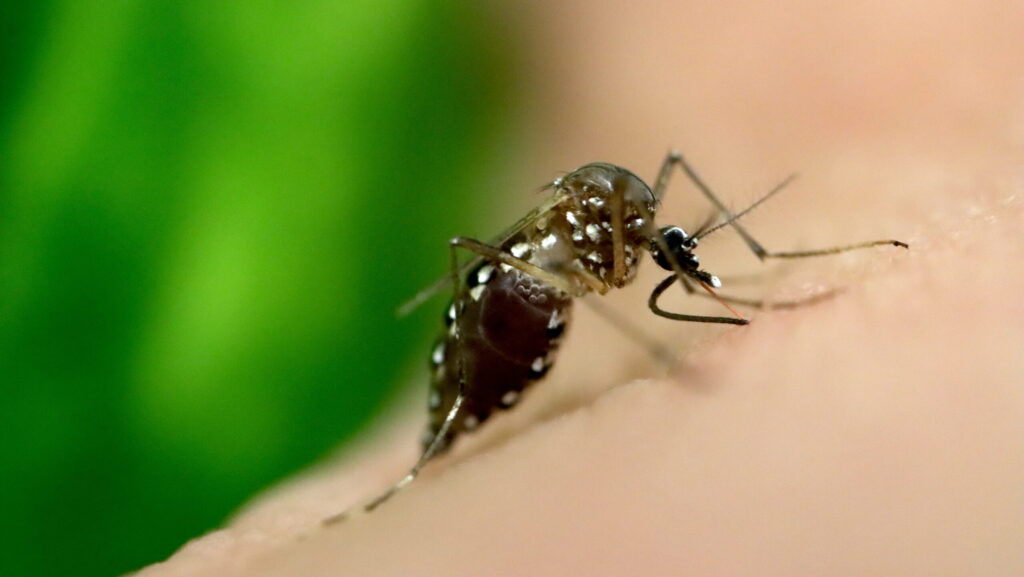
The Aedes aegypti mosquito, recognizable by its distinctive white markings on black legs and body, is responsible for spreading several dangerous viral diseases, including yellow fever, dengue, Zika, and chikungunya. Originally native to Africa, this highly adaptable species has spread globally throughout tropical and subtropical regions, thriving in urban environments where it breeds in small water containers like flower pots, discarded tires, and even bottle caps. Unlike many mosquitoes that prefer dusk and dawn, Aedes aegypti is a daytime biter, making it particularly effective at transmitting diseases during normal human activity hours. Perhaps most concerningly, this mosquito species has evolved to be highly specialized in feeding on humans, with studies showing it strongly prefers human blood over that of other animals, making it an exceptionally efficient disease vector in populated areas.
Tsetse Flies and African Sleeping Sickness
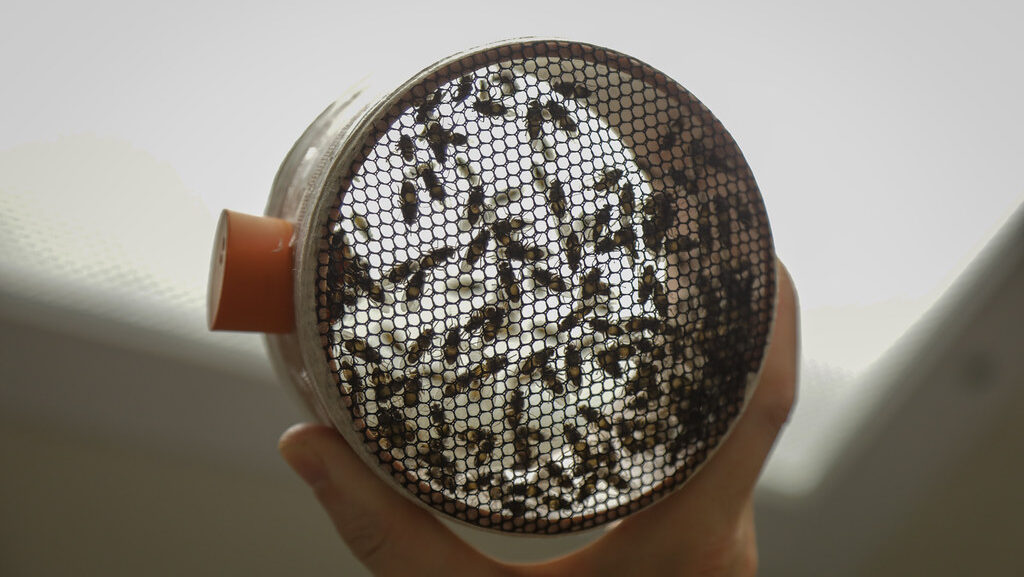
Tsetse flies, belonging to the genus Glossina, transmit African trypanosomiasis, commonly known as sleeping sickness, a potentially fatal disease affecting humans and animals across 36 sub-Saharan African countries. These robust, brownish insects are larger than house flies and can be identified by their forward-projecting mouthparts and wings that fold completely when at rest, giving them a characteristic scissor-like appearance. Both male and female tsetse flies feed on blood and can transmit the Trypanosoma parasite, which initially causes fever, headaches, and joint pain before progressing to neurological symptoms including confusion, poor coordination, and the sleep disturbances that give the disease its name. Without treatment, the disease is almost always fatal, and historically, sleeping sickness has depopulated entire regions of Africa, making tsetse flies a significant barrier to rural development and food security in affected areas.
Xenopsylla Cheopis: The Oriental Rat Flea Behind the Black Death

The Oriental rat flea (Xenopsylla cheopis) holds a notorious place in human history as the primary vector of bubonic plague, the “Black Death” that wiped out an estimated one-third of Europe’s population in the 14th century. These small, wingless parasites primarily feed on rats but will readily bite humans when their preferred hosts are unavailable, transmitting the bacterium Yersinia pestis through their bites. The plague bacillus multiplies in the flea’s foregut, eventually blocking it and causing the starving flea to regurgitate the bacteria into its victim during feeding attempts. Though modern antibiotics have largely controlled plague in developed countries, it remains endemic in parts of Africa, Asia, and the Americas, with approximately 1,000-2,000 cases reported annually worldwide. Beyond plague, rat fleas can also transmit murine typhus and other diseases, making them ongoing public health concerns in areas with poor sanitation and large rodent populations.
Kissing Bugs and Chagas Disease

Triatomine bugs, colloquially known as “kissing bugs” due to their tendency to bite humans around the mouth while they sleep, are vectors for Trypanosoma cruzi, the parasite responsible for Chagas disease. Native to the Americas, particularly Latin America, these nocturnal insects have cone-shaped heads, thin antennae, and distinctive orange or red striping around the edges of their abdomens. Unlike most disease vectors that transmit pathogens through their saliva, kissing bugs spread T. cruzi through their feces, which they typically deposit near the bite wound; the parasite enters the body when the victim unconsciously scratches the itchy bite and rubs the contaminated feces into the wound or mucous membranes. Chagas disease affects an estimated 6-7 million people worldwide and can lead to severe cardiac and digestive complications decades after the initial infection, making it a silent but deadly threat in endemic regions.
Sandflies and Leishmaniasis

Sandflies, belonging to the genera Phlebotomus in the Old World and Lutzomyia in the New World, are tiny insects measuring only 2-3mm in length that transmit the protozoan parasites responsible for leishmaniasis. These delicate, hairy flies with long, stilt-like legs are poor fliers, typically moving in short hops close to the ground and having a characteristic “jerky” flight pattern that distinguishes them from other small flies. Only female sandflies transmit disease, as they require blood meals to develop their eggs, and they typically feed at dusk and during the night when their human and animal hosts are less likely to notice their bites. Leishmaniasis manifests in three main forms: cutaneous (causing skin sores), mucocutaneous (affecting the mucous membranes), and visceral (attacking internal organs, particularly the liver and spleen), with the latter being fatal in over 95% of untreated cases and affecting approximately 50,000-90,000 people annually worldwide.
Ticks: Patient Predators Carrying Multiple Diseases
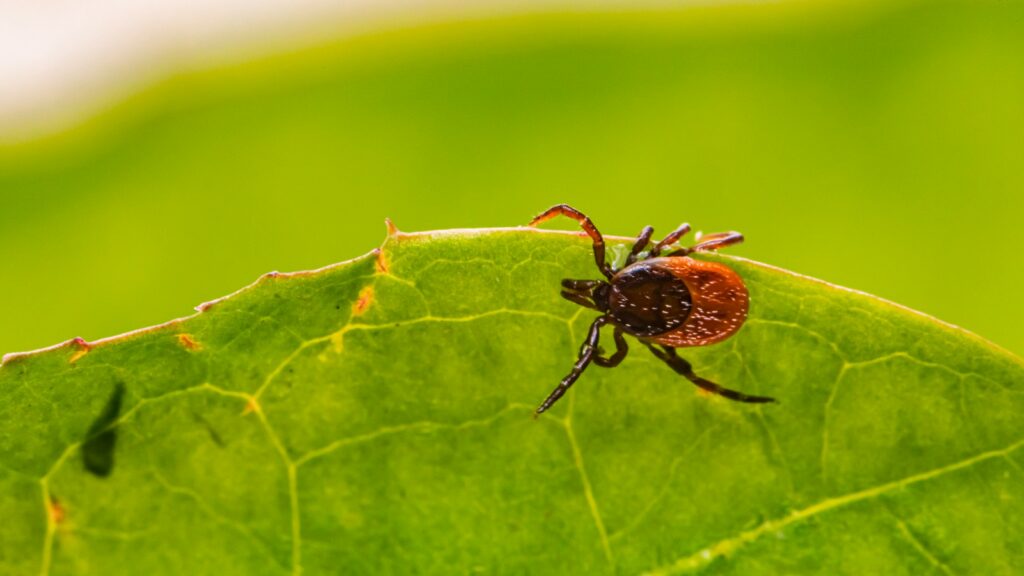
Ticks, though technically arachnids rather than insects, deserve mention as some of the most dangerous disease vectors on the planet, transmitting a wider variety of pathogens than any other arthropod group. These patient parasites can wait months or even years for a suitable host to pass by, detecting carbon dioxide, body heat, and vibrations to locate potential blood meals. Once attached, ticks can feed for days, gradually becoming engorged with blood while potentially transmitting numerous bacterial, viral, and protozoan diseases, including Lyme disease, Rocky Mountain spotted fever, babesiosis, ehrlichiosis, and tick-borne encephalitis. Climate change has expanded tick habitats in many regions, bringing them into increasing contact with human populations and creating new public health challenges in areas previously unaffected by tick-borne diseases.
House Flies: Mechanical Vectors of Digestive Diseases
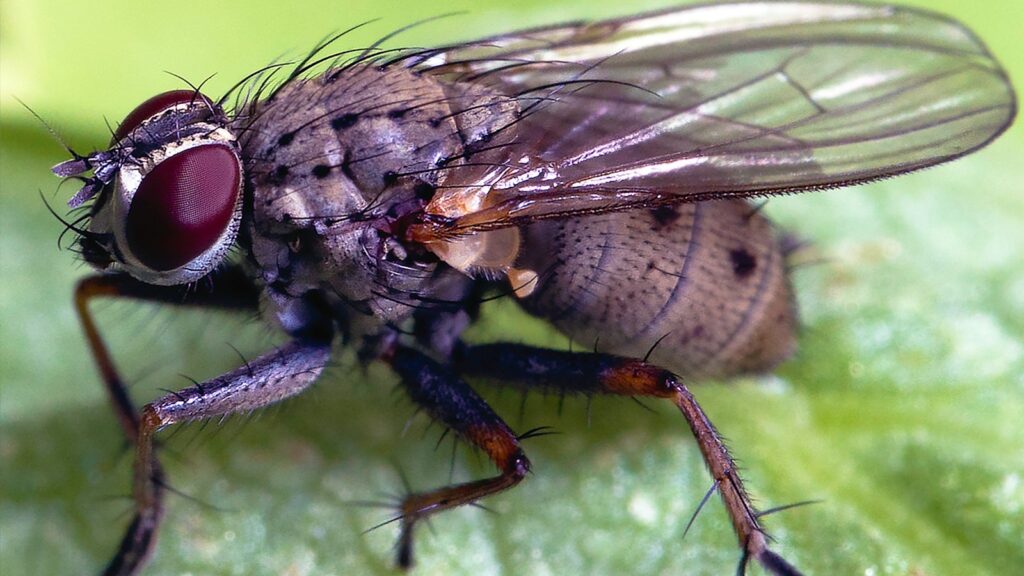
The common house fly (Musca domestica) serves as a mechanical vector for over 100 different pathogens, including those causing typhoid, cholera, dysentery, and E. coli infections. Unlike biological vectors that harbor developing pathogens within their bodies, house flies spread disease by physically carrying bacteria, viruses, and parasite eggs on their hairy bodies and sticky foot pads, as well as regurgitating and defecating on food. Their feeding habits make them particularly effective disease spreaders, as they liquefy solid food by regurgitating digestive enzymes and then sponging it up through their specialized mouthparts, potentially contaminating multiple food sources in rapid succession. A single house fly can carry up to 6 million bacteria on its body, and their attraction to both human food and waste creates a dangerous transmission pathway between sewage, garbage, animal excrement, and human consumption.
Culex Mosquitoes: Vectors of West Nile Virus
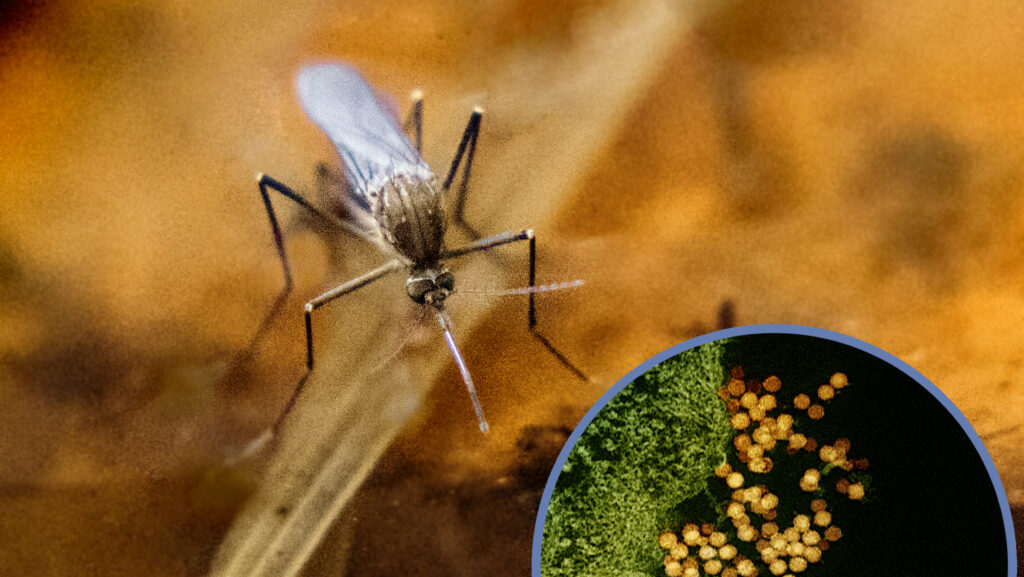
Culex mosquitoes, particularly Culex pipiens (the common house mosquito) and Culex quinquefasciatus (the southern house mosquito), are the primary vectors of West Nile virus, which has spread rapidly across the Americas since its introduction to New York in 1999. These brownish mosquitoes with unspotted wings are most active at dawn and dusk, breeding in standing water with high organic content, such as storm drains, neglected swimming pools, and polluted ponds. Unlike some mosquito-borne illnesses that primarily circulate between humans, West Nile virus maintains a complex transmission cycle involving birds as the primary hosts, with mosquitoes serving as bridges that occasionally transmit the virus to humans and other mammals. While approximately 80% of human infections remain asymptomatic, the virus can cause severe neurological disease in vulnerable individuals, particularly the elderly and immunocompromised, leading to encephalitis, meningitis, and potentially death.
The Asian Tiger Mosquito: An Invasive Threat
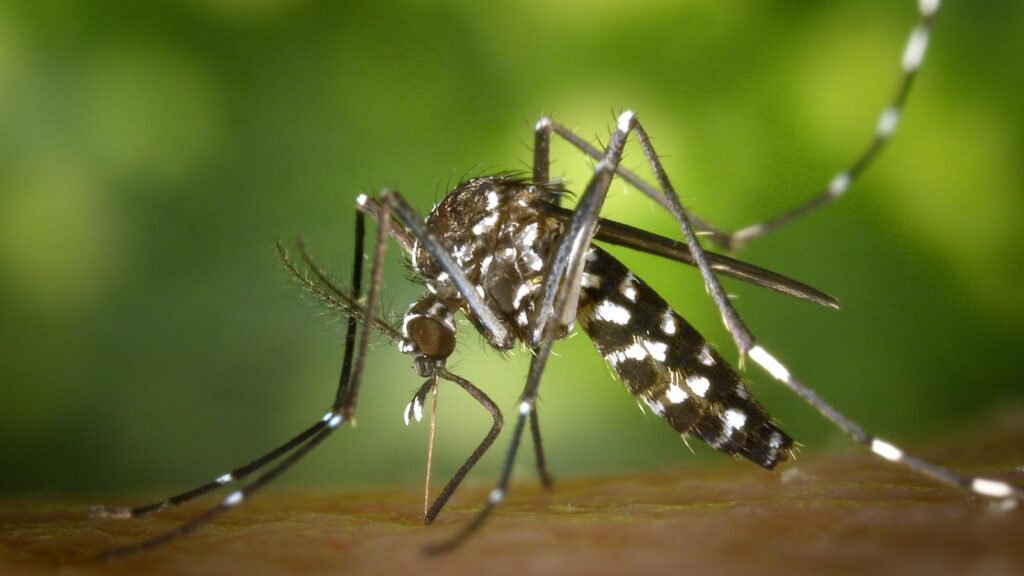
The Asian tiger mosquito (Aedes albopictus), named for its distinctive black and white striped legs and body, represents one of the most invasive mosquito species in the world and a growing public health concern. Originally native to Southeast Asia, this highly adaptable mosquito has spread to every continent except Antarctica, largely through global trade, particularly in used tires and lucky bamboo plants that can hold the small amounts of water needed for its eggs. Unlike many tropical mosquitoes, Aedes albopictus can survive cold temperatures through egg diapause (a form of dormancy), allowing it to establish populations in temperate regions previously free of tropical disease vectors. This aggressive daytime biter can transmit at least 22 different arboviruses to humans, including dengue, chikungunya, and Zika, as well as several forms of encephalitis and the parasitic disease filariasis, making its continuing global spread particularly alarming to public health officials.
Body Lice and Epidemic Typhus
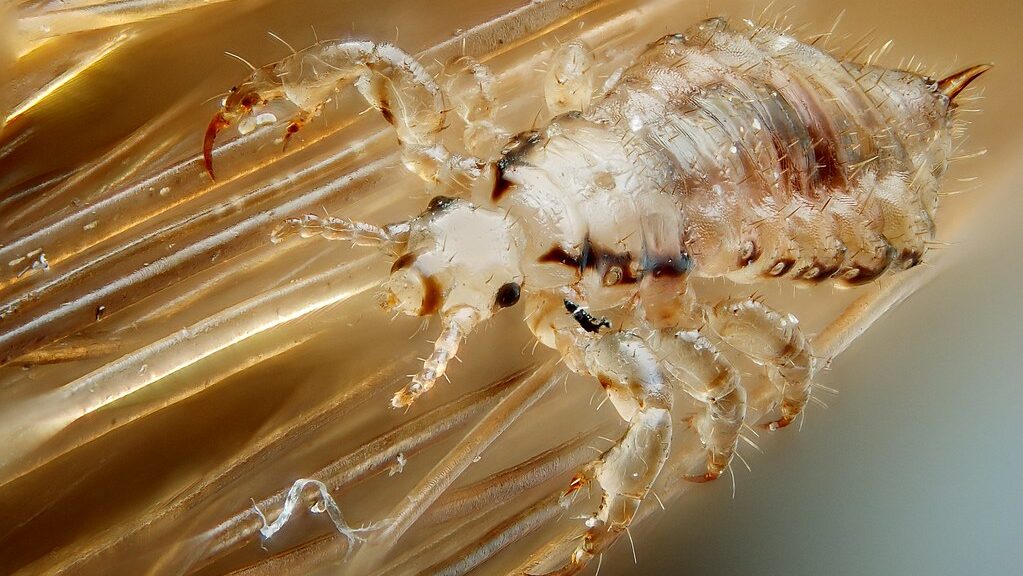
Human body lice (Pediculus humanus corporis) have been responsible for more deaths in wartime throughout history than bullets and bombs due to their role in transmitting epidemic typhus. These small, wingless parasites live primarily in clothing, especially along seams where they can attach their eggs, and feed on human blood several times daily. When an infected louse defecates while feeding, it may deposit Rickettsia prowazekii bacteria onto the skin, which can enter the bloodstream when the person scratches the itchy bite site. Epidemic typhus typically emerges during humanitarian crises involving overcrowding, poor hygiene, and cold weather – conditions that promote lice infestations – and has historically devastated armies and civilian populations during wars, famines, and natural disasters.
Control Strategies for Vector-Borne Diseases

Combating insect vectors requires multifaceted approaches tailored to specific insects and local conditions. For mosquitoes, strategies include larviciding (treating breeding sites with chemicals or biological agents like Bacillus thuringiensis israelensis), adulticiding (spraying to kill adult mosquitoes), and environmental management to eliminate standing water. Personal protection measures such as insect repellents containing DEET or picaridin, bed nets (particularly those treated with insecticides), and protective clothing provide individual defense against multiple biting insects. Novel approaches show promise, including genetically modified mosquitoes designed to reduce wild populations, the introduction of Wolbachia bacteria that prevent mosquitoes from transmitting certain viruses, and spatial repellent technologies that create protective zones around human dwellings. Vaccination programs, when available, provide critical protection against vector-borne diseases like yellow fever and Japanese encephalitis, while improved diagnostics and treatment access remain essential components of comprehensive control programs.
Climate Change and the Shifting Landscape of Vector-Borne Diseases

Climate change is dramatically altering the global distribution of disease-carrying insects, creating new public health challenges worldwide. Rising temperatures extend the active season for many vectors and accelerate the development of both insects and the pathogens they carry, potentially increasing transmission rates and disease burden. Changes in precipitation patterns—both increased rainfall and drought conditions—affect breeding site availability for mosquitoes and other vectors in complex ways that can be difficult to predict and manage. Perhaps most concerning is the expansion of suitable habitats for tropical and subtropical vectors into previously temperate regions, bringing diseases like dengue, chikungunya, and Zika to populations with no prior exposure or immunity. Climate models predict that by 2050, an additional billion people could be exposed to vector-borne diseases in regions where these illnesses were previously unknown, requiring significant adaptations in public health infrastructure and medical training to address emerging threats.
In conclusion, insects and other arthropod vectors represent one of humanity’s most persistent public health challenges, transmitting diseases that affect hundreds of millions of people annually. From ancient scourges like plague and typhus to emerging threats like Zika virus, these tiny creatures wield outsized influence on human health and development. While modern medicine has provided treatments for many vector-borne diseases, preventing transmission through vector control remains the most effective strategy for reducing their impact. As climate change alters vector habitats and human activities continue to create new opportunities for disease spread, understanding these dangerous insects and the pathogens they carry becomes increasingly important. The ongoing battle against insect-borne diseases requires sustained commitment to research, surveillance, and implementation of effective control measures, balanced with environmental stewardship and attention to the socioeconomic factors that influence disease risk and vulnerability.
